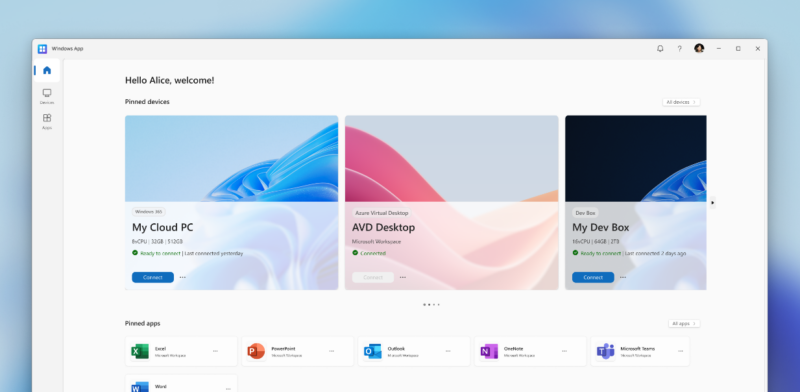
reader comments
35 with
It feels strange to say it, but it’s true: There is an app called, simply, “Windows.” It’s available for early testing on Mac, iOS and iPad, the web, Windows, and eventually Android, and it’s made by Microsoft. The fact that it exists, with such a strong and simple name, says something larger than the rather plain and starting-stage app it is now.
“Windows App,” as named by Microsoft in a rare bit of minimalism, is essentially a convenient remote desktop connection to a Windows OS on a physical system, an Azure virtual desktop, a Dev Box, or elsewhere. There are some other tricks you can pull off, too, like using your local device’s webcam, speakers, and printer connections with your remote Windows system. But you can easily read a “Windows app” for multiple platforms, including web browsers generally, as being the next step in Microsoft’s slow march toward making a virtual Windows OS something that seems convenient for everybody, whether on a business or personal account.
At the moment, you need a work or school account with Microsoft to use most of the features beyond a traditional remote desktop connection. To use a remote desktop connection, the Windows instance you’re connecting to must be running a Pro edition, as Home lacks the ability to host a remote desktop connection. There are, of course, many ways to connect to a remote PC from nearly any device, including RealVNC and others.
spelled out in the FTC v. Microsoft hearings, stemming from Microsoft’s now-completed attempt to acquire game publisher Activision-Blizzard-King. Under “Long Term Needle-Moving Opportunities” in a slide in a consumer-minded “Modern Life” presentation is “Move Windows 11 increasingly to the Cloud.” By expanding the OS-streaming Windows 365 service to non-corporate desktops, Microsoft aims to “use the power of the cloud and client to enable improved AI-powered services” while providing “full roaming of people’s digital experience.” The Verge also notes that while the Windows App is business/education-only for the moment, sign-in language indicates that Microsoft is already working on a version for personal accounts.
It’s also worth noting that the Windows app’s browser version specifically supports Chrome and Chrome OS. Microsoft’s efforts to slice off Google’s share of Google’s K-12 education market have previously involved its ill-fated “S” series and other hardware maneuvers. With a streamlined, officially supported Windows remote streaming tool that has some bidirectional powers, the company might hope to answer that eternally popular but unresolved search query, “Windows on Chromebook.”
Listing image by Microsoft






